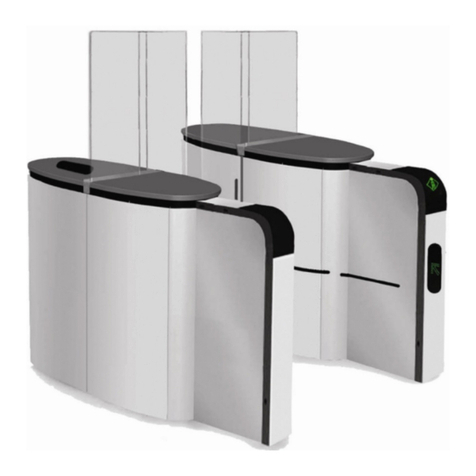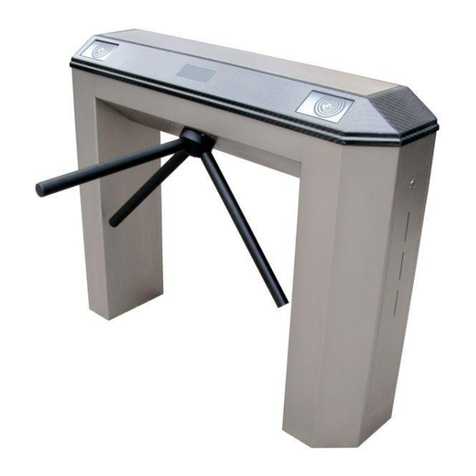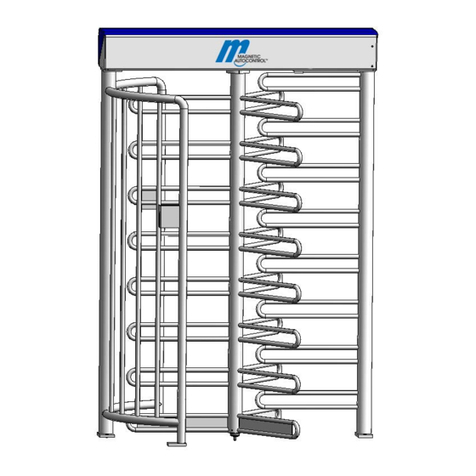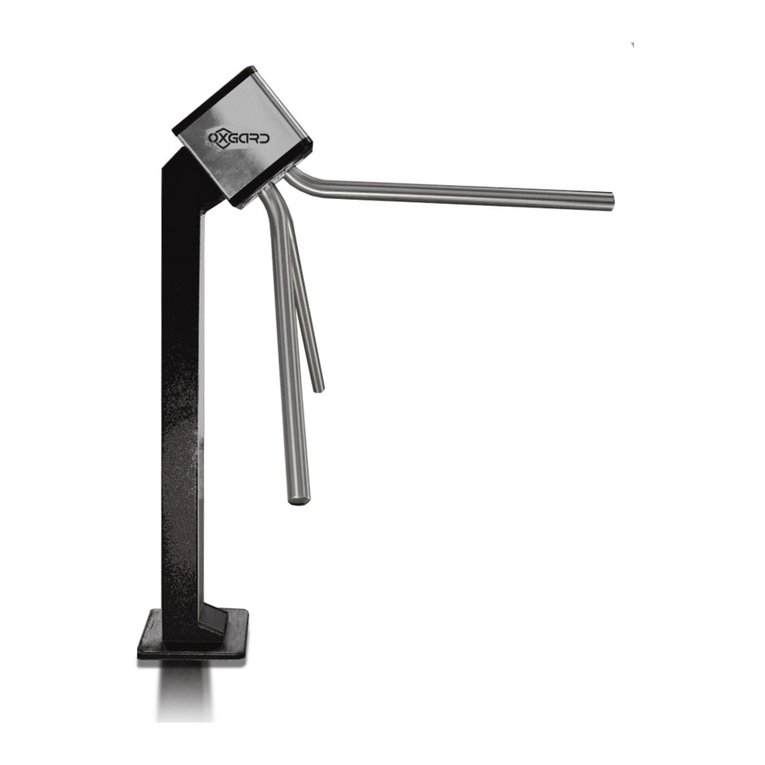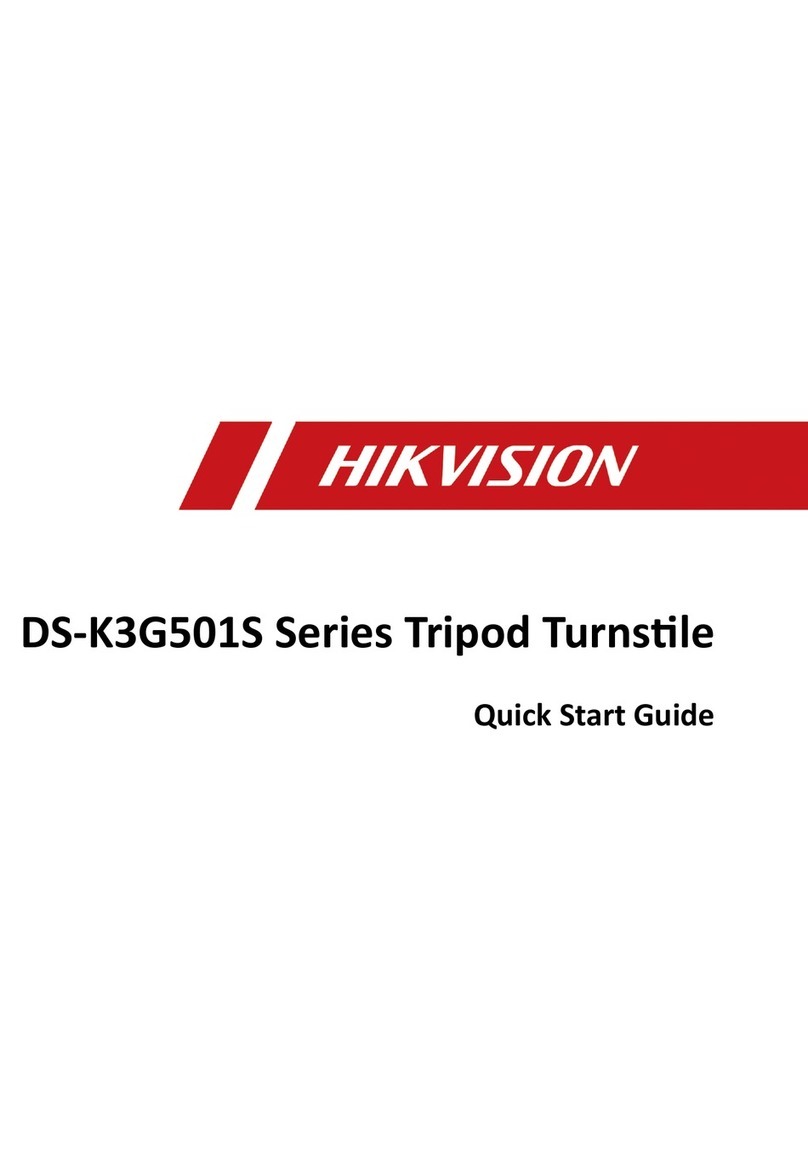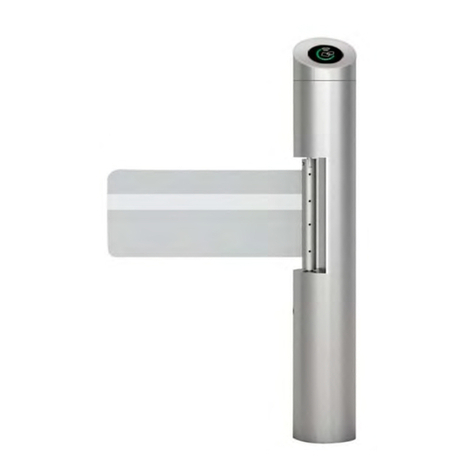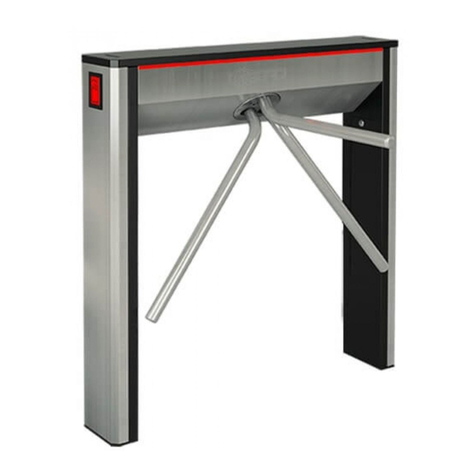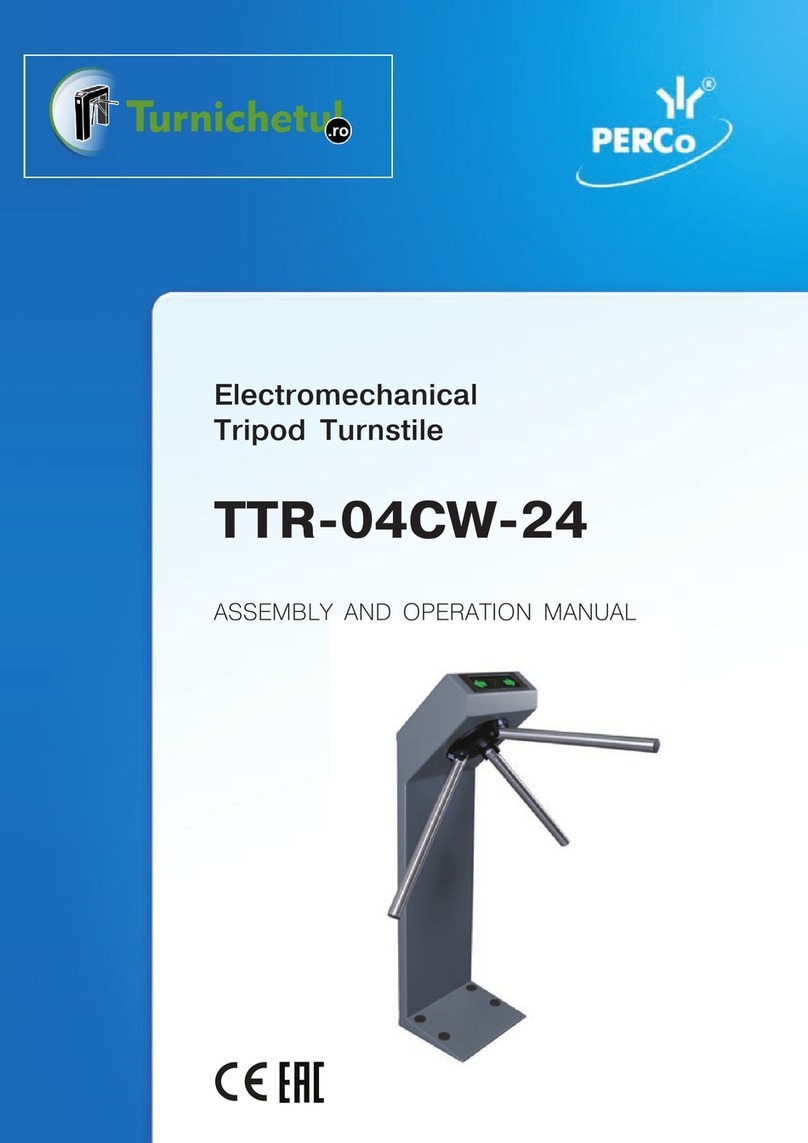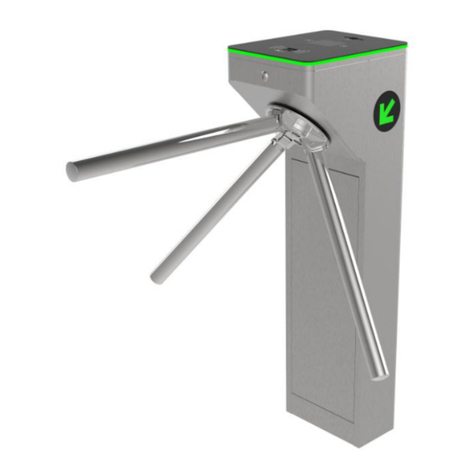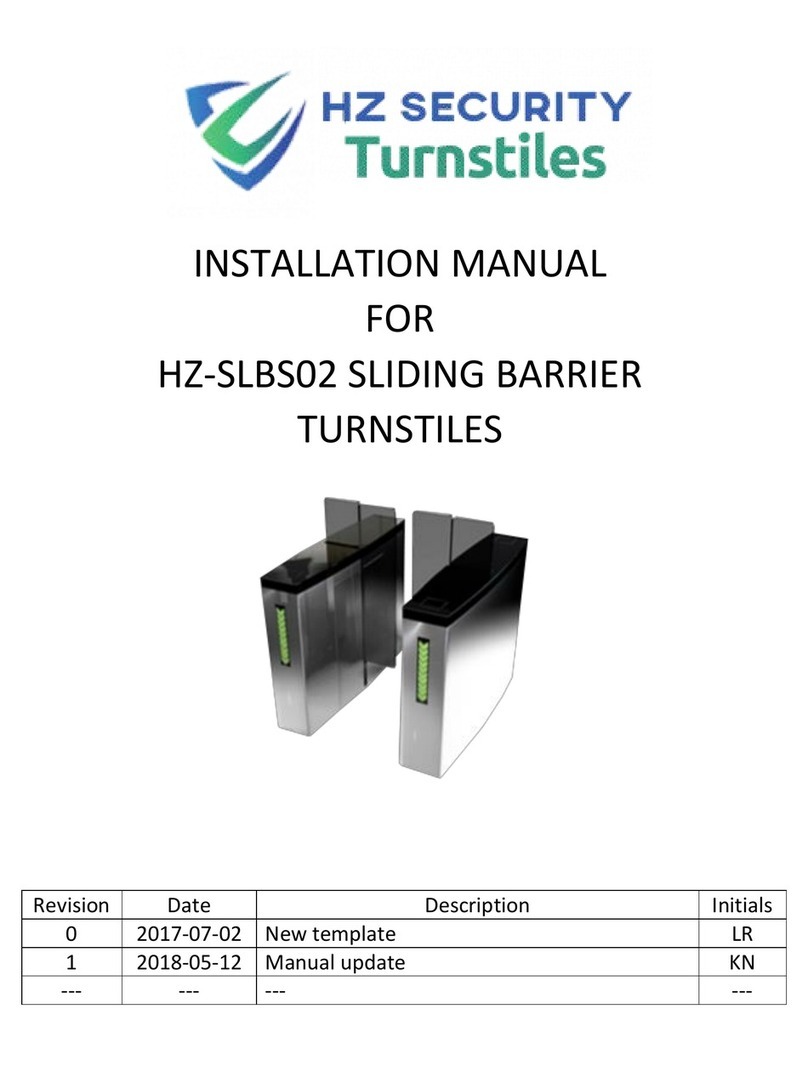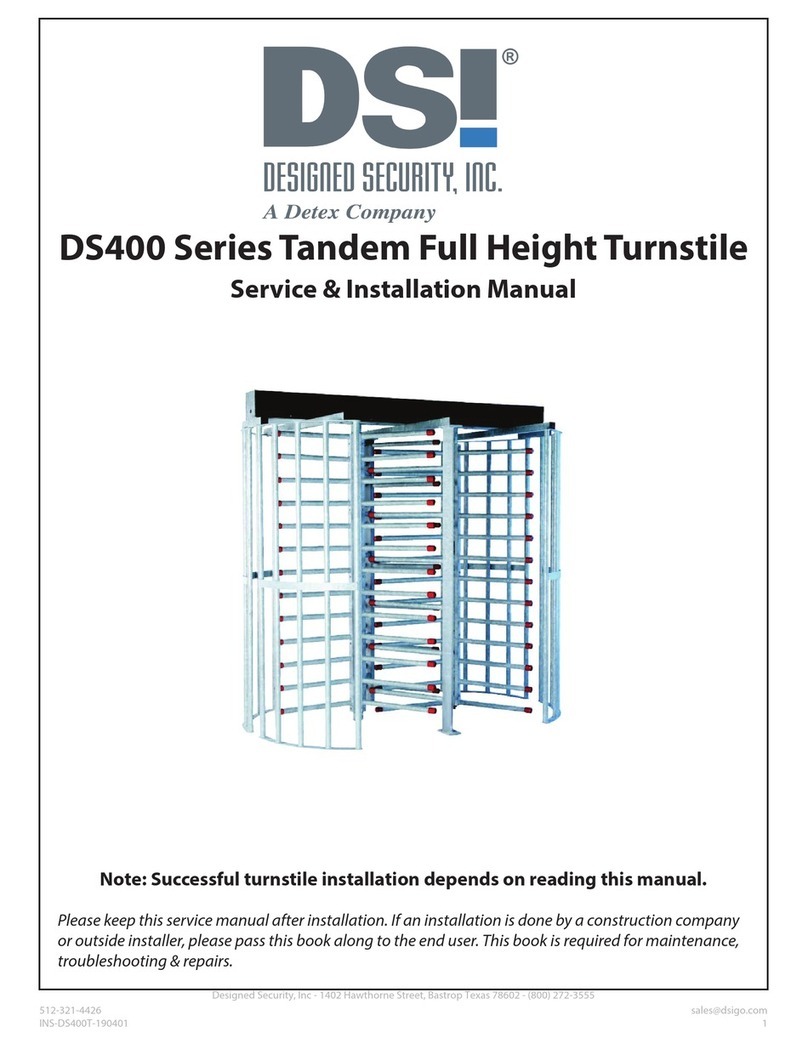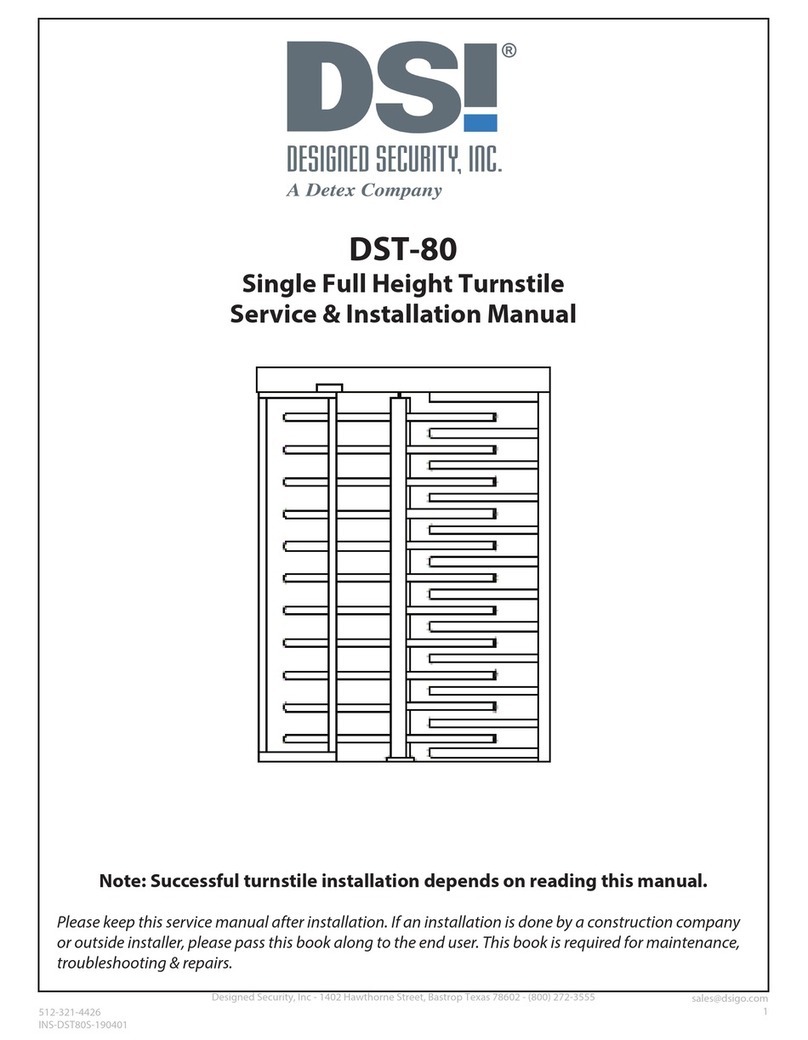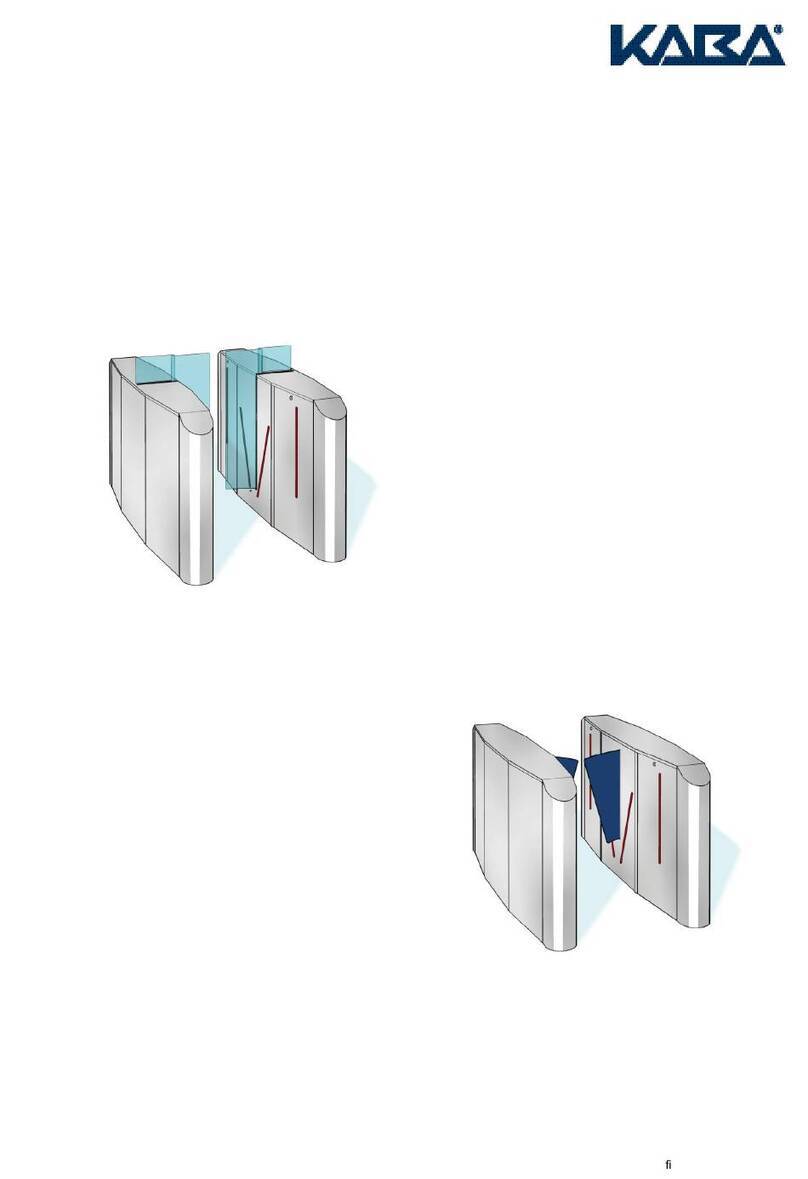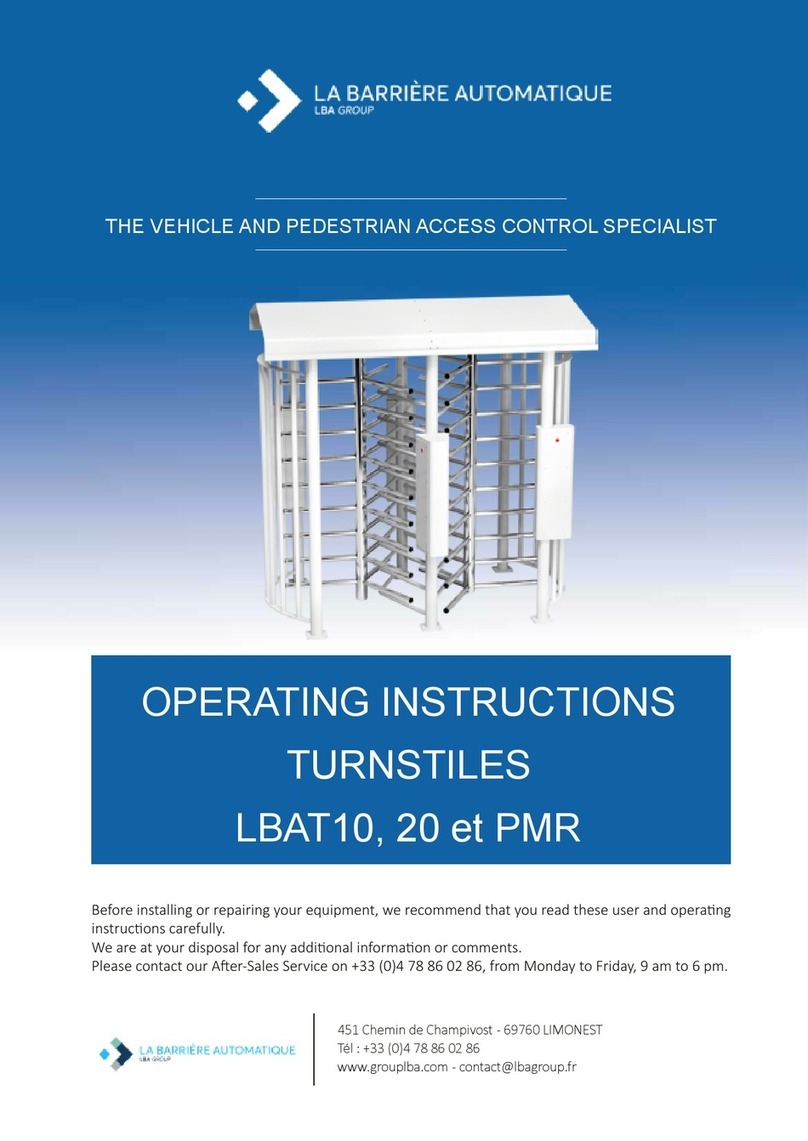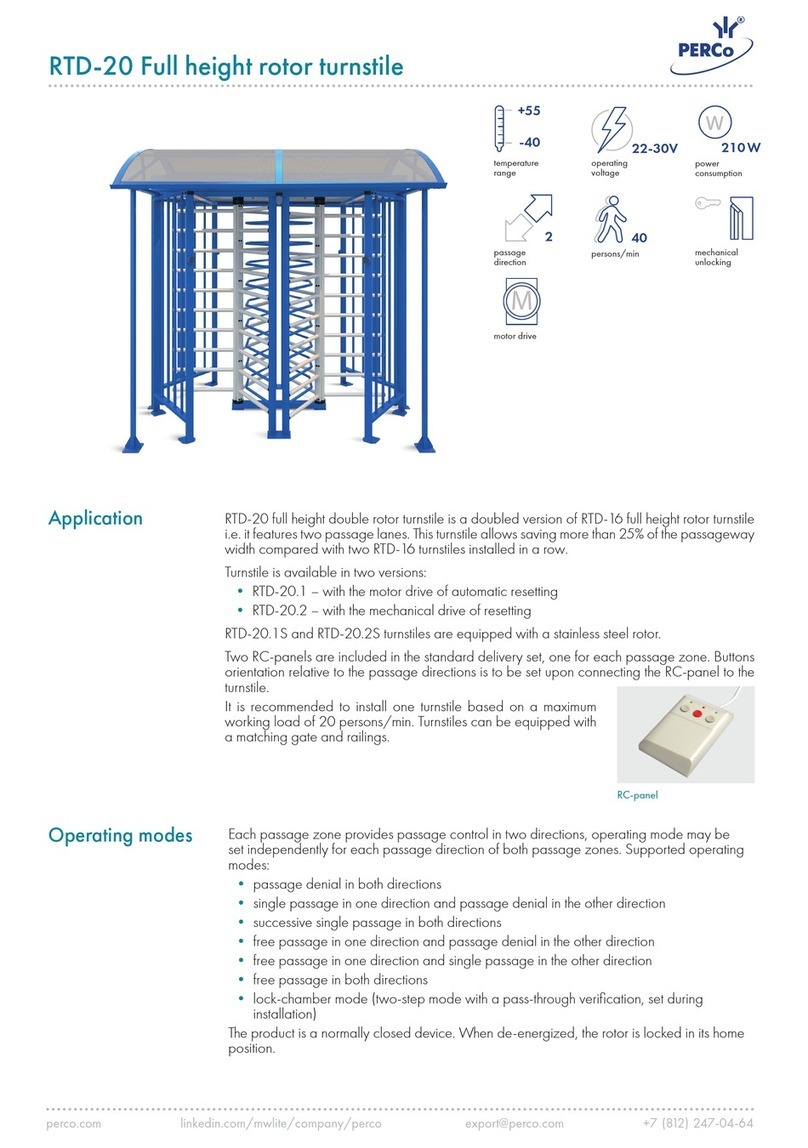
7
DESIGNED SECURITY INC
800-272-3555 www.dsigo.com
1402 Hawthorne Street Bastrop, Texas 78602 Fax 512 321 9181 Email: dsi@dsigo.com
INS-8900-151110
Refer to LANE PLACEMENT ERGONOMICS in the Appendix for information
regarding planning considerations which can maximize efficient traffic flow and
minimize nuisance alarms. Taking into consideration any installation from the
perspective of providing access control while minimizing the impact on the user’s
daily routine may allow security goals to be met more effectively.
PRE-INSTALLATION REQUIREMENTS
Conduit or other cableway:
1. From Access Control System to each lane’s Electronics for Input and Output connections.
2. From each lane’s Electronics to opposite bollard for Motor, Lock, Position and Graphic
control.
Mounting Anchors or Floor Plate:
A solid, stable mounting point for each bollard is necessary to maintain proper optical alignment.
Refer to information included for Specifications, and Layout, Squaring, and Leveling Techniques.
Contact DSI Customer Support for additional information not found in this document.
We are available to assist you by calling 800 272 3555 - Option 2
PRE-INSTALLATION CONSIDERATIONS
The DSI Slimline Barrier Optical Turnstile is a very straight-forward installation when a little time is
taken to prepare before you begin.
You may take time now to read and understand the installation and operation instructions in order to get
an idea of what the system does and what is required from you to install your turnstile.
Treat the units as you would any fine furniture or delicate instrument. Keep them out of harsh
environments. Do not store or install them where they will be exposed to inclement weather, or
extremes of humidity, dust, or temperature. This will insure that they will keep their appearance and
functionality for many years to come.
When installing the wiring, be certain to strain-relief the cables to some hard point in the bollard and
leave enough service loop on each cable for any future repairs, component removal or upgrade. In
other words, take the time to route your wires in such a way that they will not be damaged, or in the
way, should the unit require servicing in the future.
Precautions should be taken to properly ground the units to a known “Earth Ground”, during the
mounting process, to prevent any ESD (electro-static discharge) damage to the electronics during
installation and operation.
